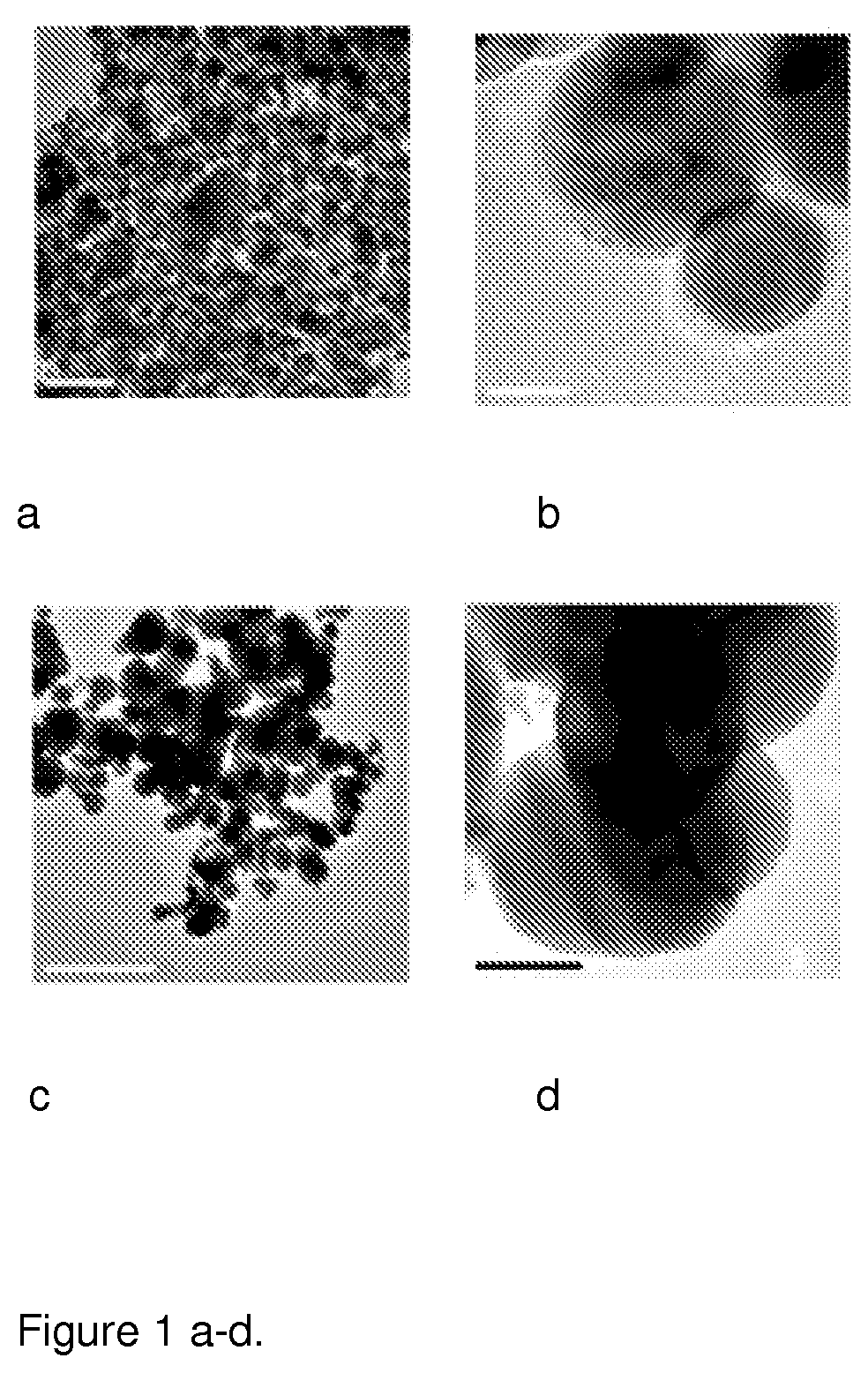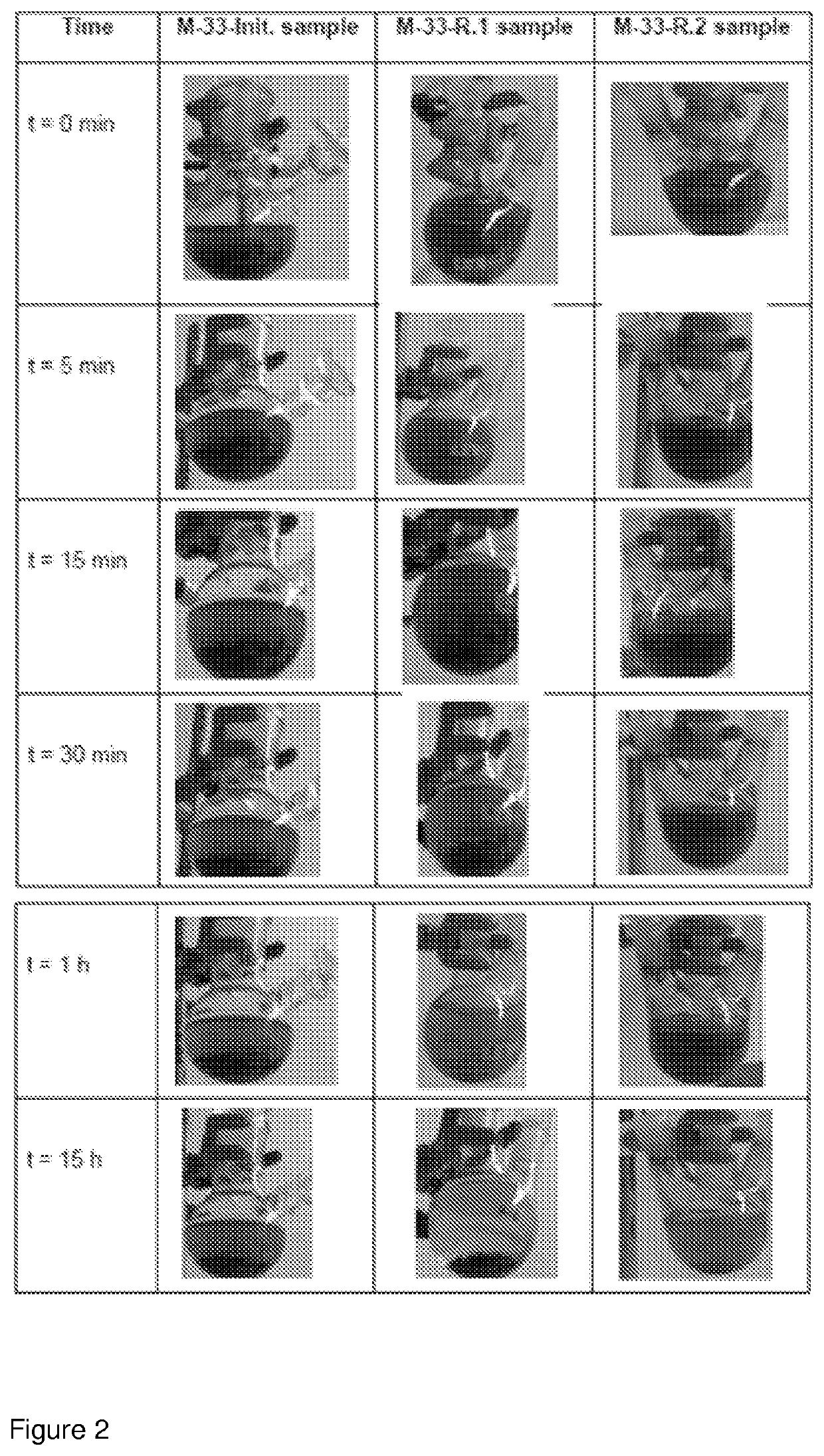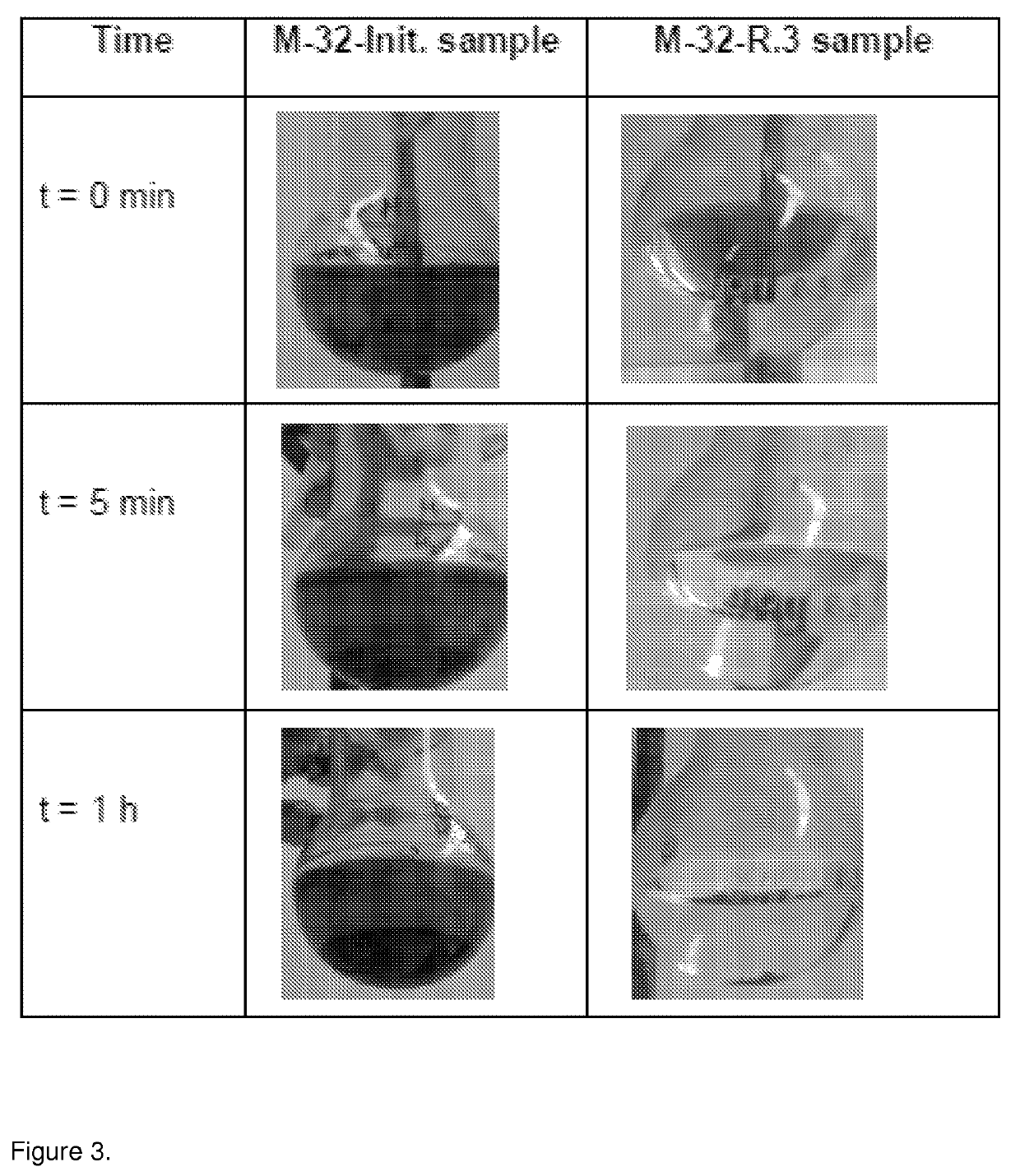Functionalized magnetic nanoparticles and a method for preparation thereof
a technology of magnetic nanoparticles and functionalized magnetic nanoparticles, which is applied in the field of magnetic nanoparticles, can solve the problems of large energy consumption in the forward osmosis technology, high energy consumption and utilization of organic solvents, and achieves the effects of high surface area-to-volume ratio, high energy efficiency and convenient regenerativ
- Summary
- Abstract
- Description
- Claims
- Application Information
AI Technical Summary
Benefits of technology
Problems solved by technology
Method used
Image
Examples
example 1
[0139]Production of Carbon-Coated Cobalt (C / Co) Nanoparticle (NP)
[0140]In accordance with the present disclosure, carbon coated cobalt nanoparticles were used as the magnetic carries for the hydrophilically active polymer. Cobalt was chosen as the magnetic metal material, because the parameters for the synthesis of these particles were known from previous experiences.
[0141]The synthesis of the nanoparticles was performed using a single piece quartz reactor. The precursor powder CoCl2 was fed by a powder feeder to a heated evaporation column composed of porous alumina pellets. The column temperature was 800° C. The evaporated precursor was carried along a nitrogen gas flow to a reaction zone. The use of the evaporation column maximized the evaporation area of the precursor. In the reaction zone, hydrogen gas was fed to the metal chloride-nitrogen mixture at 950° C.
[0142]The carbon coating on the cobalt nanoparticles was obtained by feeding an ethene-nitrogen mixture to the reaction z...
example 2
[0144]Covalent Functionalization of C / Co Nanoparticles by Diazonium Chemistry
[0145]Covalent attachment of 4-aminophenylamine was performed by diazonium chemistry for carbon coated Co nanoparticles.
[0146]Two batches of C / Co nanoparticles with different particle sizes, 28 nm (M-32 batch) and 97 nm (M-33 batch) median diameter, obtained as described in example 1, were used for covalent attachment of 4-aminophenylamine by diazonium chemistry.
[0147]In the procedure applied to both the MNP batches, 1 g of MNPs was dispersed in 20 mL distilled water using an ultrasonic bath for 45 min. A mixture of 4-aminophenylamine (0.386 mL, 3 mmol), 7.5 mL distilled water and 0.75 mL hydrochloric acid 32% by weight was prepared, resulting in an yellowish solution. The mixture was added to the MNPs dispersion under sonication. A cold solution (0° C.) of sodium nitrite, NaNO2, (0.3075 g, 4.5 mmol) in 7.5 mL distilled water was added drop wise to the mixture of MNPs and 4-aminophenylamine in order to gene...
example 3
[0152]Covalent Attachment of the ATRP Initiator
[0153]The ATRP initiator, 2-bromo-2-methylpropionyl bromide, was covalently linked by amidation reaction to the surface of amino functionalized MNPs.
[0154]0.8532 g amino functionalized MNPs from example 2 were dispersed in 20 mL dry THF under nitrogen atmosphere for 1 h using an ultrasonic bath. After that, the reaction flask was placed in an ice-bath at 0° C. under strong stirring. Triethylamine (0.2 mL, 2.75 mmol) and 2-bromo-2-methylpropionyl bromide (0.2 mL, 1.6 mmol) were added to the ice cooled dispersion. The reaction mixture was stirred for 18 h under nitrogen atmosphere.
[0155]The modified MNPs were separated by magnetic decantation, purified by washing and dried as was described in example 2. The amount of the product obtained was 0.9980 g and the reaction yield 81.45%. The reaction yield was calculated by dividing the amount of final product to the sum of amount of reagents used.
[0156]Table 2 shows the efficiency of recovery o...
PUM
| Property | Measurement | Unit |
|---|---|---|
| temperatures | aaaaa | aaaaa |
| boiling point | aaaaa | aaaaa |
| temperature | aaaaa | aaaaa |
Abstract
Description
Claims
Application Information
 Login to View More
Login to View More - R&D
- Intellectual Property
- Life Sciences
- Materials
- Tech Scout
- Unparalleled Data Quality
- Higher Quality Content
- 60% Fewer Hallucinations
Browse by: Latest US Patents, China's latest patents, Technical Efficacy Thesaurus, Application Domain, Technology Topic, Popular Technical Reports.
© 2025 PatSnap. All rights reserved.Legal|Privacy policy|Modern Slavery Act Transparency Statement|Sitemap|About US| Contact US: help@patsnap.com



